All dogs need grooming, but you’d be forgiven at first glance for thinking grooming your Labrador will be a quick job. After all, Labradors have a wonderfully easy looking coat. It is short, dense and very waterproof. No tangles to comb out of ears, or fur balls to gather around their legs. But Labradors shed like crazy, and to keep them comfortable and your home relatively fur free you will need to give them a quick brush down at least once a week. During shedding season I groom my Labs daily, although bathing is limited to the times they’ve got mucky!
Contents
- How to groom a Labrador
- Best brushes and shampoos
- Puppy bathing schedule
- How to bathe your dog
- Getting dried off
Our guide to bathing and grooming your Labrador will help you to keep your dog clean and fresh, without the fuss. We’ll explain why your Lab needs grooming and how often, and help you decide when, and whether, your dog needs a bath! Then we’ll take you through the process in simple steps. We’ll give you clear instructions on what to do, and help you to choose a few essential tools for the job.
How To Groom A Labrador
Grooming your Labrador is easy if your pup is used to being brushed from a young age. Firm brushing with good bristle body brush will remove dried mud, sand and dust from your dog’s coat and help distribute the oils through his fur. It may also improve the shine, and he will enjoy the ‘massaging’ effect of the firm strokes going through his fur.
Sit your dog in front of you, outdoors if they are shedding a lot. Have a pot of treats next to you and pass them one every few seconds if they are nervous or reluctant to stay put.
I usually begin at the base of their body near the tail. Make short gentle pulls downwards with the brush, and after each groom pick out the loose fur that the brush has collected and set it down next to you to dispose of later. Work your way slowly up the body and around their flanks, stopping at the neck as you reach their head. Your Lab’s face won’t need any grooming, and their legs are normally fine to be left, although our particularly hairy chocolate Lab always needs a quick groom around her thighs.
Best Grooming Brush For Labradors
I like a plain body brush intended for horses for a quick daily ‘once over’. They usually have a handle strap on the back and if you find one that fits your hand comfortably they are great. For a more intensive brushing I use a slicker brush.
The slicker brush(paid link) gets right into the coat and does a good job of removing dead hair on a daily basis. However, sometimes the dead hair situation calls for a more assertive tool!
You can’t stop your dog shedding, but you can reduce the impact on your home by using an efficient ‘rake’ on his coat during periods of severe moulting. An ordinary brush quickly gets clogged with dead hair and you will struggle to make much progress without a special tool for loosening dead hair.
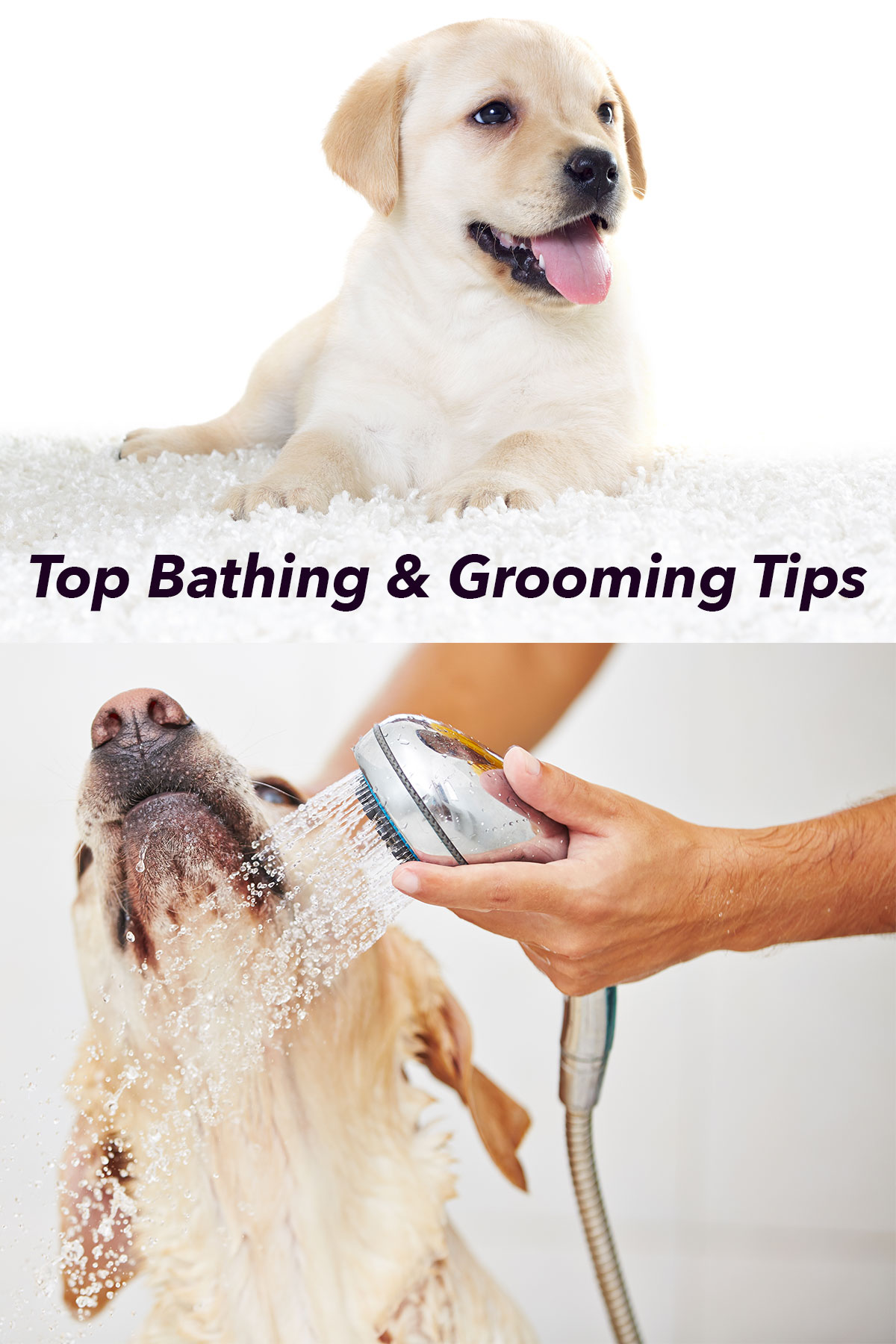
Deshedding Tools
Our favorite deshedding tool is a Furminator,*(paid link) with spaced metal teeth.

You can also buy a useful tool made by Kong. It’s called a Zoomgroom*(paid link) and comes in bright pink or blue.

The Zoomgroom*(paid link) is a sturdy plastic tool with wide spaced prongs. It is a great way to loosen the dead hair so that it falls away easily.
Somewhat more controversial, are special rakes with a blade incorporated. These shedding tools can be very effective if used with care.
How Often Should I Groom My Dog?
You don’t need to groom your dog every day if you don’t want to, but if you make this part of your daily routine, your dog will get used to the process and benefit from the regular physical contact.
If you don’t fancy going into battle with dead hair during the worst of the moulting season, you can always treat your Labrador to a pampering at your local dog salon.
But there are still occasions when your dog’s coat will need some additional attention.
Because Labs might be gorgeous, adorable friends. But they are also rather mucky pups.
So let’s take a look at the in’s and out’s of how to bathe a dog.
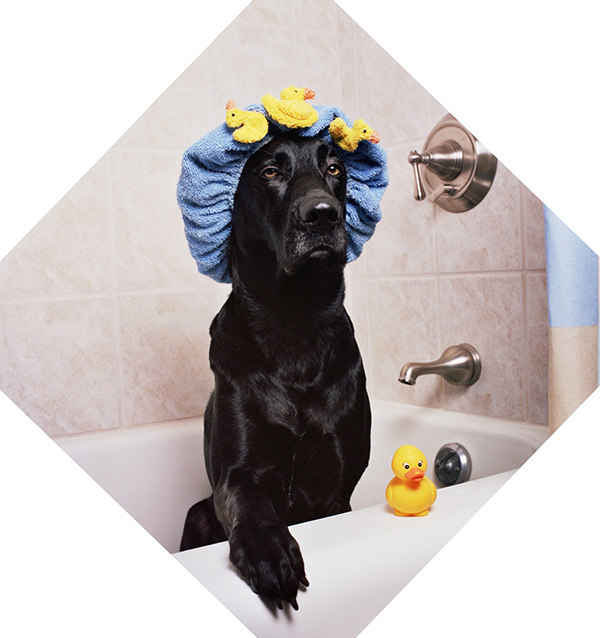
How Often Should You Wash Your Dog?
There are Labradors that are bathed every week, and other Labradors that are almost never bathed. I tend to bathe my Labs when they get a bit smelly, or if they have rolled in something unpleasant. Something which many dogs have a huge enthusiasm for!
Many Labs take a delight in rolling in disgusting ‘treasures’ that they happen upon during your daily walks. Dead animals, and fox poo, are some of their favorites. Labradors also love mud. They will go out of their way to find some, especially if you have just bathed them, or had new carpets fitted.
Paddling around in muddy puddles and the edges of boggy ponds can result in a filthy and smelly coat, again a hose down may be sufficient. But sometimes you’ll need the help of something more powerful than water.
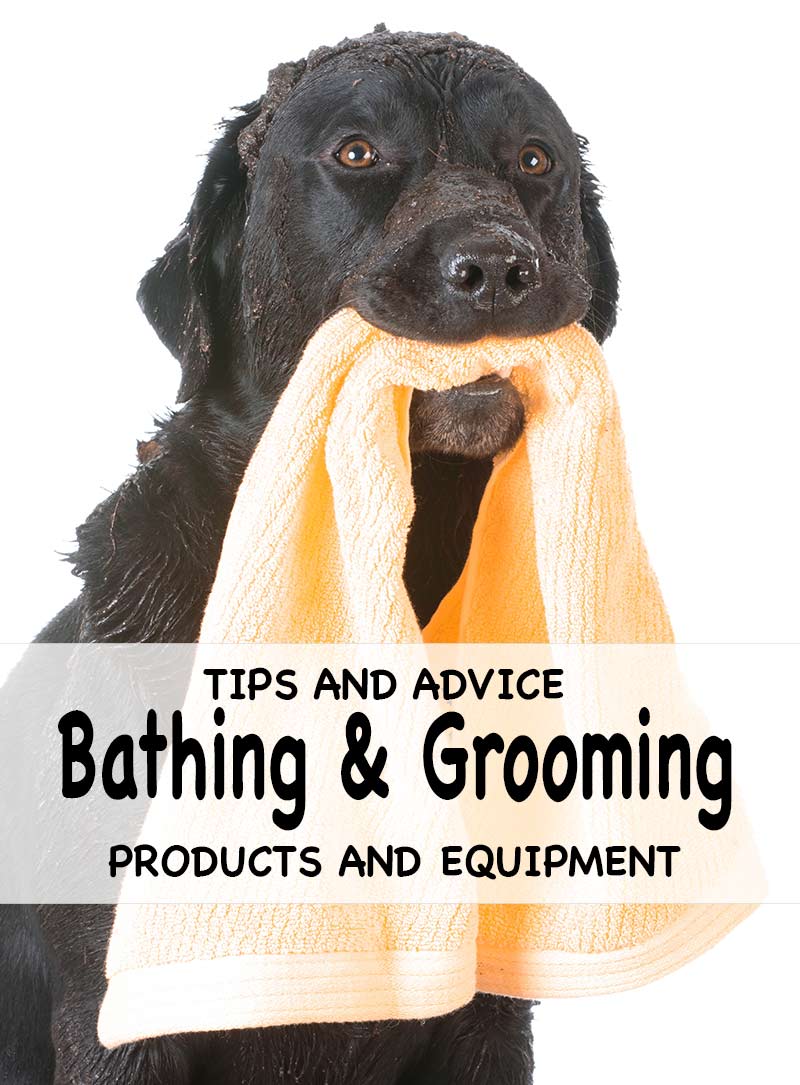
Dog Bathing Schedule
Bathing as and when they need it is absolutely fine for most Labs. But if you want to have a routine then once a month is a nice easy schedule for most people to remember. It is a little different with puppies however.
How Often Should You Bathe A Puppy?
If you want to give your puppy a bath, by all means do so. He probably doesn’t need one, but it’s a good idea to get him used to the sensation of being soaked in water and rubbed.
A puppy first bath is something of a rite of passage, but it’s important not to go overboard. A weekly shower with lukewarm water, will make sure that when he really needs a bath later on, you won’t have a fight on your hands!
Puppy Shampoo and Dog Shampoo
When you bathe your puppy, use a specially designed puppy shampoo or adult dog shampoo labelled as safe for puppies*(paid link) from 8 weeks.

This won’t be as strong and will be kind to your puppy’s skin and her coat.
It is not a good idea to shampoo your older Labrador regularly unless you really need to. Especially in the winter. This is because the shampoo strips out the natural oils and reduces the waterproofing and cold repellent qualities of his double coat.
Best Shampoo For Dogs
I have used a variety of shampoos on my dogs. The main thing is to avoid shampoos intended for human adults. They will sting like crazy if you get them in your dog’s eyes, and he’ll run a mile next time he sees the bath towels coming out! Your alternative option is to make your own shampoo.
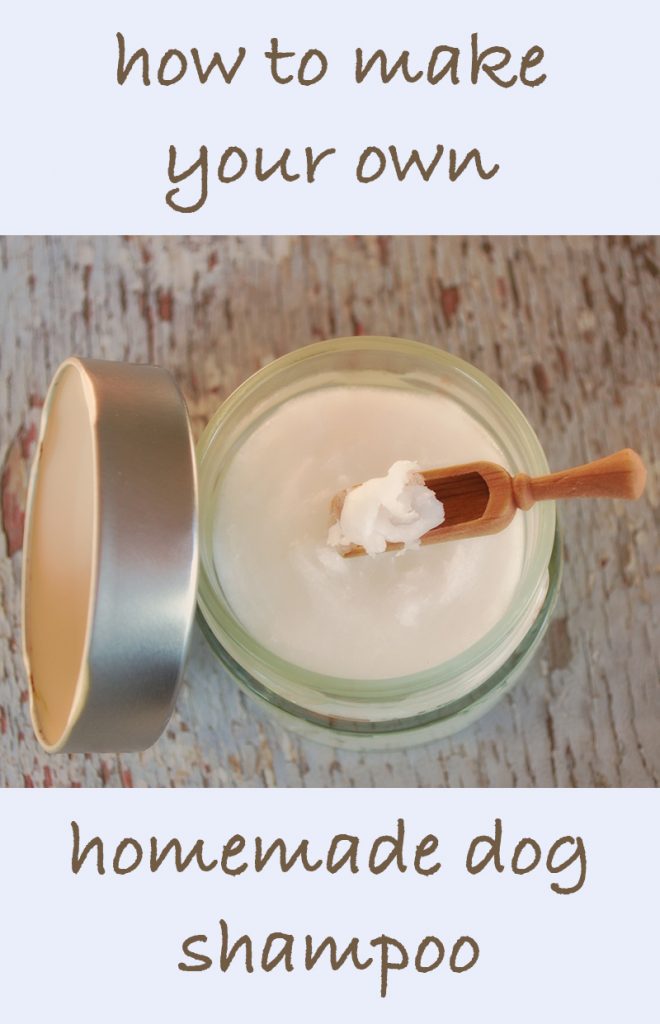
How To Bathe Your Dog With A Hose
Labradors don’t mind cold water when the weather is fine. This means the most of the time if he’s got a bit mucky you can hose him down in the back yard.
But if your Labrador is not fit for human habitation after a hosing down, a good shampooing*(paid link) will be necessary too.

You can do this in nice weather, outside in the backyard too.
Have a couple of large towels ready before you begin. Because it is so waterproof, it is not easy to get a Labrador’s coat wet.
Do your best and work some shampoo*(paid link) into the coat. Use a glob the size of a coin, and rub with your fingers working it into the coat. Especially where he is mucky. Then hose her down and repeat.
The second time will be easier as you have broken down the oils in the dog’s coat. Work up into a good lather and rinse very thoroughly. Remember that dogs lick their coats so thorough rinsing is particularly important.
Putting Your Dog In A Bath Tub
Although outdoor bathing is fine in the warmer months, in the cold weather you will need to bathe your Lab indoors. Lay a few towels on the floor to walk him to the bath room, and lift him into the tub.
Don’t let him leap in and out, as when the tub is wet he could slip and hurt himself. Use a shower nozel to rinse and wash just as you would in the back yard.
Portable Pet Shower
A portable pet shower*(paid link) is great if you live in an apartment that doesn’t have a traditional bath tub.

It has a moveable shower spray unit that doesn’t need fixing to a fawcet, it simply comes with a reservoir that you fill. You also don’t need to do it in the bathroom, as the mess from it is really minimal.
Just choose a room with a wipe clean floor if possible, and stand away from the furniture. The mechanism is similar to a carpet shampooing machine, and it makes a similar level of noise to a vacuum cleaner.
Booster baths

If you suffer from a bad back, you may want to consider a booster bath* (paid link)for your dog. They save you bending over for ten minutes at a time and eliminate any problems you might have leaning down for a prolonged period.
These are also useful if you struggle to lift your dog, or if they have joint problems.

You can use a dog ramp* to go with the tub so there is no lifting involved.
Drying your dog

To towel dry your dog you will need two dog towels*(paid link). Towel dry until your first towel has absorbed as much water as it can, then move on to towel number two.
Dog towels are specially designed to copy with the kind of water loss that a dog’s coat usually produces.

Another great option is a dog dryer*(paid link). These are basically hair dryers for dogs.
Make sure you keep your hand moving through the fur in the area where you are directing the blast of air to ensure the temperature isn’t too high.
Specially made dog dryers are designed to work well on thick coats like your Lab’s.
Affiliate link disclosure: Links in this article marked with an * are affiliate links, and we may receive a small commission if you purchase these products. However, we selected them for inclusion independently, and all of the views expressed in this article are our own.
The Labrador Site Founder
Pippa Mattinson is the best selling author of The Happy Puppy Handbook, the Labrador Handbook, Choosing The Perfect Puppy, and Total Recall.
She is also the founder of the Gundog Trust and the Dogsnet Online Training Program
Pippa's online training courses were launched in 2019 and you can find the latest course dates on the Dogsnet website

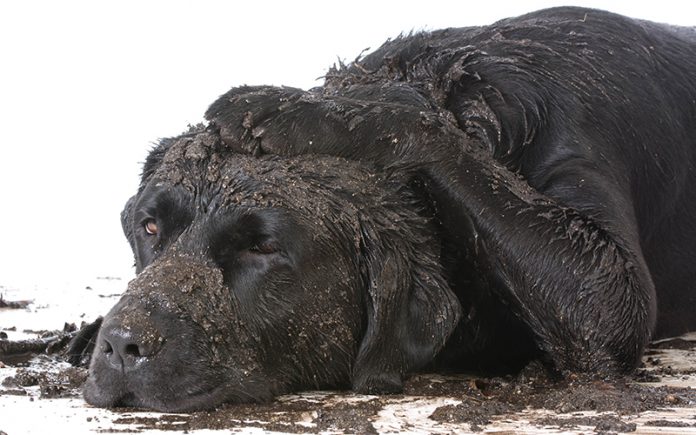

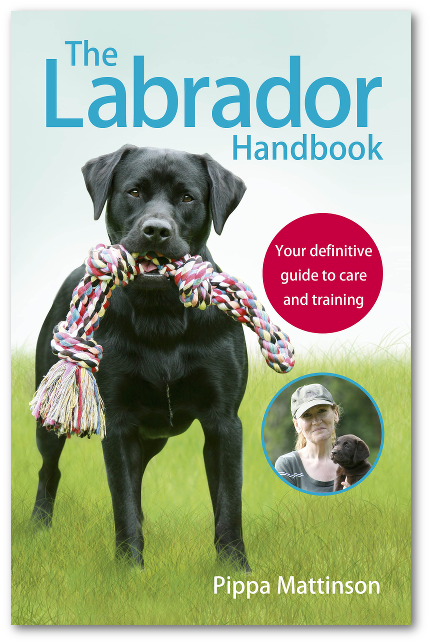



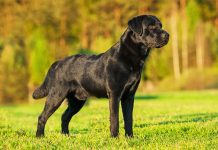
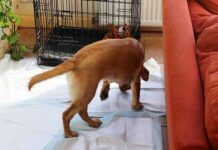
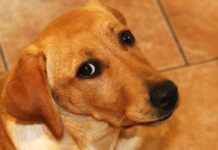

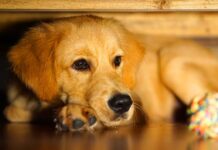








You shouldn’t own a dog if you have to ask these questions. 7 weeks is also to young for the puppy to be away from its mother and litter mates
We give hot towel dry bath to my pup everyday with a bi-weekly proper bath schedule.
I greatly appreciate all the tips you gave regarding giving a dog a bath, specifically in cold weather. When I noticed that my dog has been playing around the garden more often, I knew that this means I would need to bathe it extremely soon. However, since the weather in my area hasn’t gotten any warmer, this may be a little tough, so I’ll look for any dog stylists or groomers who can show me how it’s done before trying it myself at home.
This really helps me…especially how often I have to bath my 7-month-old pup. Thanks
Hello everyone
I am going to have a 4 weeks male lebra tomorrow and this is my first puppy to care of.Please help me regarding his care.And do’s and dont’s about caring a lab puppy.Mainly regarding his food diet.
Hi Manjeet, Please leave your puppy with the breeder until he is eight weeks old. This article explains why: https://www.thelabradorsite.com/when-can-puppies-leave-their-mother/
You will not believe the horror stories that dogs face at the hands of breeders in india. I’ve witnessed them myself.
I once rescued a cocker spaniel pup by paying off for it, it was infested with ticks and reduced to a skeleton. The guy was delighted that he was getting paid for it.
Unfortunately, most others have it much worse than that and the laws are too weak to deal with the problem. The police wont even take you seriously if you report all this.
Horrible as their lives are, i can vouch for the fact that the innumerable stray dogs here have a better life than the ones stuck with breeders.
I have never found any type of brush that removes hair. So I bought a lint remover made for clothes. It has a slightly sticky surface that picks up loose lint on clothes and loose hair on a lab. He actually lays down and enjoys. As the surface is covered with the loose dog hair just peel off the sheet and you have a new one on the roller.
PS: I have a Lab that loves baths. When he smells I tell him its bath time and he runs up to the shower stall. When the temp is right I tell him to hop in and he does. I have a hand held sprayer. He stands perfectly still until I am done and gets out of the shower when I tell him to. I find this amazing, no training was involved.
LOL- never was an article more timely. My 12 and a half year old yellow Lab (who should be old enough to know better) took great delight in plunging into a muddy pool yesterday and came out looking more like a black Lab. Unfortunately I don’t have a garden hose, so it was just several basins of water and a LOT of scrubbing to get the worst of the mud off.
Good read.
I see there’s a lot confusion regarding the use of baby shampoo for dogs…
The fact is:
You should use dog shampoo, but in “emergency cases”, you can use baby shampoo. However, using shampoo for adults on your dog will most probably cause irritations, as it is too abrasive.
Filip
I hardly ever bath my 8yrold black lab but its beginning to become part of a problem. He used to swim at the beach regularly but due to injuring myself he has not gone in months. I attempted to get him in the shower ( as i cant lift him into the bath) but he reacted negatively, even barked in an aggressive tone which is completely out of character for him. Not even treats would work! I have managed to get him in there one other time where i just soaked him with lukewarm water because I didn’t have any doggy shampoo. Is he afraid of the shower? He see’s me get in daily and is quite happy to lie on the matt while im in there.. how can i clean him? He is starting to get that bad doggy smell! Please help 🙁
I put white vinegar on a paper towel and rub it on Jake’s fur lit takes away even skunk smell and he is shiny. . I only do it about every other month or if he is smelly. Informant seem to irritate his skin or anything. Of course I also brush him with a furminator . I’m handicapped so I don’t do. It as often as I should but I can fill a garbage bag sometimes and still have more shedding.
Jackie
Hai pippa I’m big fan of you your article are very useful for us. I bought 8 weeks old lab pup. I have girl kid she 9 years old. I’m living in apartment. Pltell me the lab hair falling in put floor is harmful for human being. Daily I use to groom my lab. And also I keep my house very clean. By any chance we can swallow the hair. Please tell me
Hi Anusha, I am pleased to hear you find our articles useful. Hopefully this article on shedding will put your mind at rest regarding your puppy’s hair: https://www.thelabradorsite.com/shedding-labradors-its-the-moulting-season-again/ Best wishes, Lucy
For grooming I am working with our new chocolate puppy to get him used to the way I did it with my best friend Luther before he passed. For bath time I take Beau in with me and get him are cleaned up and then after drying him off I get my shower. Luther never had to be coaxed to take a bath, he just stepped in and waited, and the towel drying was his favorite part! So far Beau is taking well to the baths, and the pool too, so I’ll have to see how he plays out with it as time goes on but so far it’s going great.
For grooming, again Luther had his own love affair when it came to grooming, the vacuum! I did not do anything to coax him to let me use it on him, started one day when cleaning the house and he sat next to me with the vacuum hose and just waited until I tried it on him. After that it was clean the dog, then the hoi=use, then the dog again. He really loved the hose being run all over his body (not near the head though) and it really kept his coat nice, and we were done when I got tired since he never seemed to get enough. He still shed, nothing will stop that (ever!). so for those that have gotten your first Lab and didn’t do all the research on the breed you will soon find out about this! If you live where it gets hot you will wonder how he grows his hair so fast to make up for what he sheds. Winter in the warm house is the same as summer outside, tons of hair, so be prepared when it really gets warm and they shed off that coat to stay cool.
Stink and shampoo, clean and then they roll to get rid of the smell. Funny in a whacky way but they like to hide their scent which is really good for a hunting dog. Nothing worse than showing up to a hunt smelling like Foo Foo. Luther made it 12 years and I tried just about every kind of shampoo to see which was best. Fleas, it’s a flea shampoo and spraying the yard to kill them off. Other than fleas, I settled on Pantene with conditioner for dry hair. He tolerated the “fresh” smell until the bath was over. Carpet or mud outside he was going to roll in it. And again, for those that have never had a Lab you need to get used to it since they can find mud and water in a desert. His smell didn’t bother me but the girlfriends were not so much impressed that he could swim and retrieve, only that he stunk and they were not going to be a part of it if they could help it.
Puppies are special and need to be loved with it all, bath time has to be fun! Treats are a must during and after the bath, and be really careful on the temperature of the water since a puppy doesn’t have the hair of the grown up and what feels good to us is hotter than hell to them, cool or cold is best.
Pippa is spot on with the baths and smells, but don’t punish them for what they are and what they do. You will never find as loyal a friend as a lab but just like a baby they need a lot of care and attention.
I have a 2 month old Labrador pup. I live in place with high humidity . And I was wondering if it was alright to give him a bath on a daily basis as he smells a lot and it’s very hot over here ?
From Dogs Naturally… works wonderful!
Spray bottle
10 drops lavender essential oil
6 drops sweet orange oil
6 drops peppermint essential oil
3 drops eucalyptus essential oil
8 ounces of purified water
Instructions:
Mix all the ingredients into the spray bottle and shake well.
Cover the face and eyes of your dog and spray on their coat to get rid of their dog odor.
This blend is especially useful on rainy days when the doggy smell is a lot more noticeable. Your home can also be sprayed with this blend to freshen up the house, and it has the added properties of sanitizing your rooms thanks to the eucalyptus and lavender oils.
Looking after your pet doesn’t have to be hard. Essential oils are a great way to use a natural product to help your dog with minor ailments and problems. Not only will your dog thank you for it, you’ll also be thankful knowing you’re taking the best care for your furry friend.
I never wash our lab Stan but then again he swims in the sea daily and there is generally no mud (ever) where we live, only sand and dust. What I use to groom him with and I think it’s great, is an attachment made for a Dyson Vacume cleaner that has a retractable steel brush. You comb him, like you would with any other brush, but when enough hair has collected in the wires of the brush you just release a handle, the bristles retract and the combed out hair is sucked into the cleaner, gone. It also manages to get a surprising amount of dead skin, dust and sand out of his coat. It’s such a neat way to groom him and no need to be picking hair out of clogged brushes and combs and there’s almost no mess. I highly recommend it. Stan also likes it, he has no aversion to the noise and seems to like the sucking sensation. His younger has, from time to time, got sort of captured by the Vacume but it doesn’t hurt him so much as surprise him. Love my lab.
My chocolate lab Rocky is 4 years old. He is the most loving and caring dog ive ever had. He has been bought up with my 7 grandchildren who play with him over the wood they all hide behind the trees and he goes and rounds them all up. But like every dogs loves rolling in the mud. But i wouldn’t have him any other way. Just a wonderfuk dog.
Rocky sounds lovely 🙂 Lots more on our chocolate friend here: https://www.thelabradorsite.com/information-about-the-labrador/the-chocolate-labrador/
Actully my lab of 2 month was palying at our terrace so he was a sort of dirty so i make him bath with dettol it can harm him ?? 2
In my time working at the vet’s, a girl rushed in with a litter of puppies that she’d just washed, & to put a gleam on their coat, she’d sprayed their backs with Mr Sheen furniture polish. Most of them died. Disinfectant is unnecessary for your animal & the use of chemicals can be downright risky. None of us were born to be ‘sterile’ & all healthy skin has a natural protective mantle so don’t destroy it. A wound is different but licking the spot should be prevented, usually with an elizabethan collar or ‘cone’. If you want to minimize the ‘doggy’ odour, there are many dog shampoos designed to do so on the market.
Hi… I have a 4 years old black labra and he is surprisingly so scared of water that he would run away if I even go close to a tap. He doesn’t really likes rolling in to trash but he loves cow dunk. And also, during his initial 2-3 years he was quite aggressive towards other dogs in sight and used to walk like a boss but nowadays he doesn’t even barks at them even though they’re barking at him aggressively. What can be the reason of his fear for water ? How can I make him comfortable with it ? And also, is it a problem if he’s scared of other dogs barking at him or targeting him ? He stays outside our house and only goes for a walk with a leash on. Please help !
How often do you bathe a six month lab?
My pup is about 5months. How often am I to bathe her? I was told I’m bathing her too much therefore she scratches a lot. I usually bathe her once every 2 to 4 weeks. Is once a month ok or is that overdoing it? I was also told 3x a year. HELP PLEASE!
Hi Nakia, you don’t need to bath her at all if you don’t want to. I hardly ever bath my labs, unless they roll in something smelly 🙂
Hello! Sam is a 12yr old Female Yellow Lab. She is the love of my life. But in late spring every year she develops a terrible fishy odor. She has had her anal glands removed due to a small lump the vet recommended to remove. She does swim in a fresh water lake starting in spring I brush her and bath her after her trips to the lake. The strange thing is as soon as the cool weather starts in the fall the smell disappears. When I take her to the vet they can’t smell anything. I’ve tried medicated shampoos nothing seems to work. what am I doing wrong Or do you have any Ideas. Thank you.
hi..i have seven weeks gold lebra puppy.i have two questions to ask.
1.tell me should i bath my puppy after seven weeks of born wid pet soap.
2.my puppy drinks cow milk and cerelac.is it good for him?
I am getting a yellow lab puppy soon, and I am trying to get my supplies together now. Can you use the same brushes on a very young puppy (8 weeks through 6 months) that you can on an older lab? Or do you need special puppy brushes? All of the brushes I’m looking at are very big for full sized labs, and I can adjust to use them on my puppy, but is it bad for her skin?
i have a lab puppy 2month 10 days old…what is the bath rootine for this age.
My Husband & I have had our lovely golden lab Oscar for 4 years now. We love him so much even though he still behaves like a puppy and can’t to off leash without wondering away to sniff every blade of grass.
Over the years I’ve come to use my Kong ZoomGroom for pre bath brush, a good quality oatmeal deodorizing shampoo and the ZoomGroom during bathing & finishing off with a good towel dry another brush with the ZoomGroom and cuddles. During heavy shedding season (spring & summer) I do all this once or twice a mnth, depending on how Oscar smells & how much dirt I get on my fingers after cuddles and scratches, but I finish off with using my shedding tool from Shedeeze.
Hope Ive helped with grooming ideas. It seems like a lot but I only do it once a month and it only takes 30-45 mins depending on how OCD I’m feeling
I brush my Lab almost everyday or at least 3 times a week. It really reduces moulting, and shedding is minimal. The added bonus is a lovely soft dewy coat!
I am new to dogs and just got a lab who is Oct 15th 2014 born – just about 3 months and 13 days. Bruno has developed into a fine ruffian getting almost everything his teeth can set upon back to stone age. He was not bathed even once on the advice of seller – in Kolkata, India – these sellers are just middlemen who will sell anything with any name or any advice about the product you are buying. We had only internet data available to guide us through the process. Our vet has confirmed that what we have is a good breed of labrador. My wife too has some old memory of a lab their family once had at least 20 years back.
We have been only sponging the animal with some ‘Savlon’ wash. That shampooing is an option was not known to me and this time I will try. I am going to bathe him now regularly. Presently he stinks even after he has a dry-bath. I am glad I have a new option now. It is definitely the decaying body oils of this animal that is stinking. Earlier we thought it was his dirty ears and we cleaned them. There was good improvement but he stinks now too. Bath is probably the right answer. Traditionally we have never been dog lovers as Muslims do not think the animal is clean unlike cats which always lick themselves clean. But we are breaking out of tradition like many who may be appreciating a dog’s abilities and sense of attachment with owners. That he is a good ruffian seems doubtless. We are happy.
I have tried every grooming tool on the market and I have finally settled for the best one anyone could have. It’s an attachment to your dysons Hoover and it grooms my Toby amazingly but not only that all the dead hair gets sucked up straight away in to my Hoover. No mess left behind and Toby looks amazing after it, he doesn’t mind the noise of the dyson either which is a bonus seen as he helps me around the house when we clean 🙂 coudn’t reccomend it enough
My beloved Labrador died 3 years ago aged 13. Other than being hosed down after diving into to a muddy stream he never had a bath. Our vet said it us not necessary to bath labs unless they really roll in something yucky
Good info….I am new to Labs, but love my TANK, because he is a beach bum, we are two of a kind…I was worried about bathing him and him loosing the oil that they need in the water. Thanks for the info…
Also still wonder about the cold water of Lake Erie, this dog goes in with ice floating around him…not on it of course. Is this safe for him to be in such cold water? We are talking just after the lake thaws. He is a good listener to stay off the ice where it may break…
Tank & Holly
I have a 7 week old lab. I bought it from my friend and k think it has fleas. Is it safe to bathe the pup?
It is safe to bath your puppy, but bathing alone won’t deal with fleas. You’ll need to use a special flea shampoo or spot on treatment from your vet. If you have a cat, be sure to use a cat safe flea treatment. Some dog flea treatments can harm cats.
I have a beautiful black lab, she is 2 months old and has been with me for about 3 weeks. She is nice and cuddly and playful, she has already learned to go outside for potty and to play fetch. But this morning I had a shower and she was jumping at the sides of a tub and squeeling, I believe she also wanted to take a bath. I’m not sure if it’s ok to bath her now, is she too small for it? How old should the lab be to take a first bath?
Hi Alex, you can bath her if you want to, but she doesn’t actually need to be bathed. 🙂
I think I’ll give her a bath next week, she is starting to smell a bit bad 🙂 Thanks for the advice!
My dog is an assistance dog, she is my hearing dog. She is a strong swimmer and loves getting in either the beach or the river. Is allowing her in swimming doing her coat any harm. If I know we are going near water I always pack towels and dry her off well.
Swimming is great exercise for your dog Elizabeth 🙂
Damn straight
Mimi’s now 8 years old and is a working dog. She’s my ears and lets me know when the bus is coming (I can read happily).
The vet said bathe monthly. She jumps happily into the tub, I bathe her, towel her off, then send her to husband for final drying.
She is groomed almost daily — that’s what I learned at school.
Surprisingly, she doesn’t like swimming and won’t jump in with all the other dogs at the school dog pool party. Of course she can swim — I’ve seen her after she’s fallen into a small, below ground pool another time.
Yes, I don’t think excessive bathing is good for them. My lab paddles/swims in the sea almost every day and a good towelling off and sometimes a brush (to keep most of the sand out of the house) seems to keep him odour free. I have been assured by other dog walkers on the beach that sea water is fine for them, it is chlorine from the pool that can start itchy skin problems. I have been astounded at the amount of hair lost though ! Brushing regularly does seem to help a little but I have invested in a robomop thing that swirls around using electrostatic energy to pick up hairs in between proper vacuuming and works a treat!
I know many dog owners who routinely bathe their dogs ,personally I do not believe it is necessary on the grounds that it destroys the natural oils in the coat, it makes no difference about the way the dog feels about himself and the huge cost in having it done professionally. By all means wash the dog when it has rolled in something smelly but otherwise leave well alone! Grooming is another matter and I do that on a regular basis (monthly) using a metal pronged device called a Furminator which does an excellent job. Finally, buy a good vacuum cleaner designed to collect dogs hair and I swear by Bosch. Happy Christmas!
Roger
Thanks Roger for your comments on this.
What about the bad smell? When I wash my dog, after 3-4 days the bad smell comes back. My dog lives outside and not in the house. Is this the reason? Anything I can do about this smeel and avoid bathing especially in winter time?
Maria